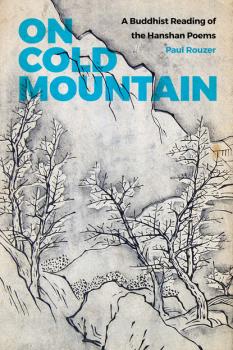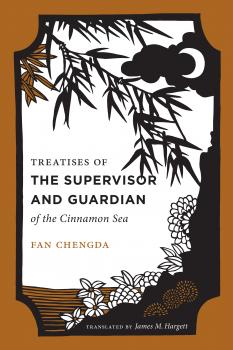China Program Books
Скачать книги из серии China Program BooksForgery and Impersonation in Imperial China
Across eighteenth-century China a wide range of common people forged government documents or pretended to be officials or other agents of the state. This examination of case records and law codes traces the legal meanings and social and political contexts of small-time swindles that were punished as grave political transgressions.
On Cold Mountain
In this first serious study of Hanshan (“Cold Mountain”), Paul Rouzer discusses some seventy poems of the iconic Chinese poet who lived sometime during the Tang dynasty (618–907). Hanshan’s poems gained a large readership in English-speaking countries following the publication of Jack Kerouac’s novel The Dharma Bums (1958) and Gary Snyder’s translations (which began to appear that same year), and they have been translated into English more than any other body of Chinese verse. Rouzer investigates how Buddhism defined the way that believers may have read Hanshan in premodern times. He proposes a Buddhist poetics as a counter-model to the Confucian assumptions of Chinese literary thought and examines how texts by Kerouac, Snyder, and Jane Hirshfield respond to the East Asian Buddhist tradition.
Chang'an Avenue and the Modernization of Chinese Architecture
In this interdisciplinary narrative, the never-ending «completion» of China's most important street offers a broad view of the relationship between art and ideology in modern China. Chang'an Avenue, named after China's ancient capital (whose name means «Eternal Peace»), is supremely symbolic. Running east-west through the centuries-old heart of Beijing, it intersects the powerful north-south axis that links the traditional centers of political and spiritual legitimacy (the imperial Forbidden City and the Temple of Heaven). Among its best-known features are Tiananmen Square and the Great Hall of the People, as well as numerous other monuments and prominent political, cultural, financial, and travel-related institutions. Drawing on Chang'an Avenue's historic ties and modern transformations, this study explores the deep structure of the Chinese modernization project, providing both a big picture of Beijing's urban texture alteration and details in the design process of individual buildings.Political winds shift, architectural styles change, and technological innovations influence waves of demolition and reconstruction in this analysis of Chang'an Avenue's metamorphosis. During collective design processes, architects, urban planners, and politicians argue about form, function, and theory, and about Chinese vs. Western and traditional vs. modern style. Every decision is fraught with political significance, from the 1950s debate over whether Tiananmen Square should be open or partially closed; to the 1970s discussion of the proper location, scale, and design of the Mao Memorial/Mausoleum; to the more recent controversy over whether the egg-shaped National Theater, designed by the French architect Paul Andreu, is an affront to Chinese national pride.For more information: http://arthistorypi.org/books/chang-an
Qing Governors and Their Provinces
During the Qing dynasty (1644�1911), the province emerged as an important element in the management of the expanding Chinese empire, with governors – those in charge of these increasingly influential administrative units – playing key roles. R. Kent Guy�s comprehensive study of this shift concentrates on the governorship system during the reigns of the Shunzhi, Kangxi, Yongzheng, and Qianlong emperors, who ruled China from 1644 to 1796.In the preceding Ming dynasty (1368�1644), the responsibilities of provincial officials were ill-defined and often shifting; Qing governors, in contrast, were influential members of a formal administrative hierarchy and enjoyed the support of the central government, including access to resources. These increasingly powerful officials extended the court�s influence into even the most distant territories of the Qing empire.Both masters of the routine processes of administration and troubleshooters for the central government, Qing governors were economic and political administrators who played crucial roles in the management of a larger and more complex empire than the Chinese had ever known. Administrative concerns varied from region to region: Henan was dominated by the great Yellow River, which flowed through the province; the Shandong governor dealt with the exchange of goods, ideas, and officials along the Grand Canal; in Zhili, relations between civilians and bannermen in the strategically significant coastal plain were key; and in northwestern Shanxi, governors dealt with border issues.Qing Governors and Their Provinces uses the records of governors� appointments and the laws and practices that shaped them to reconstruct the development of the office of provincial governor and to examine the histories of governors� appointments in each province. Interwoven throughout is colorful detail drawn from the governors� biographies.
The Sichuan Frontier and Tibet
During China's last dynasty, the Qing (1644-1911), the empire's remote, bleak, and politically insignificant Southwest rose to become a strategically vital area. This study of the imperial government's handling of the southwestern frontier illuminates issues of considerable importance in Chinese history and foreign relations: Sichuan's rise as a key strategic area in relation to the complicated struggle between the Zunghar Mongols and China over Tibet, Sichuan's neighbor to the west, and consequent developments in governance and taxation of the area.Through analysis of government documents, gazetteers, and private accounts, Yingcong Dai explores the intersections of political and social history, arguing that imperial strategy toward the southwestern frontier was pivotal in changing Sichuan's socioeconomic landscape. Government policies resulted in light taxation, immigration into Sichuan, and a military market for local products, thus altering Sichuan but ironically contributing toward the eventual demise of the Qing.Dai's detailed, objective analysis of China's historical relationship with Tibet will be useful for readers seeking to understand debates concerning Tibet's sovereignty, Tibetan theocratic government, and the political dimension of the system of incarnate Tibetan lamas (of which the Dalai Lama is one).
The Taiping Heavenly Kingdom
Occupying much of imperial China’s Yangzi River heartland and costing more than twenty million lives, the Taiping Rebellion (1851-64) was no ordinary peasant revolt. What most distinguished this dramatic upheaval from earlier rebellions were the spiritual beliefs of the rebels. The core of the Taiping faith focused on the belief that Shangdi, the high God of classical China, had chosen the Taiping leader, Hong Xiuquan, to establish his Heavenly Kingdom on Earth.How were the Taiping rebels, professing this new creed, able to mount their rebellion and recruit multitudes of followers in their sweep through the empire? Thomas Reilly argues that the Taiping faith, although kindled by Protestant sources, developed into a dynamic new Chinese religion whose conception of its sovereign deity challenged the legitimacy of the Chinese empire. The Taiping rebels denounced the divine pretensions of the imperial title and the sacred character of the imperial office as blasphemous usurpations of Shangdi’s title and position. In place of the imperial institution, the rebels called for restoration of the classical system of kingship. Previous rebellions had declared their contemporary dynasties corrupt and therefore in need of revival; the Taiping, by contrast, branded the entire imperial order blasphemous and in need of replacement.In this study, Reilly emphasizes the Christian elements of the Taiping faith, showing how Protestant missionaries built on earlier Catholic efforts to translate Christianity into a Chinese idiom. Prior studies of the rebellion have failed to appreciate how Hong Xiuquan’s interpretation of Christianity connected the Taiping faith to an imperial Chinese cultural and religious context. The Taiping Heavenly Kingdom shows how the Bible–in particular, a Chinese translation of the Old Testament–profoundly influenced Hong and his followers, leading them to understand the first three of the Ten Commandments as an indictment of the imperial order. The rebels thus sought to destroy imperial culture along with its institutions and Confucian underpinnings, all of which they regarded as blasphemous. Strongly iconoclastic, the Taiping followers smashed religious statues and imperially approved icons throughout the lands they conquered. By such actions the Taiping Rebellion transformed–at least for its followers but to some extent for all Chinese–how Chinese people thought about religion, the imperial title and office, and the entire traditional imperial and Confucian order.This book makes a major contribution to the study of the Taiping Rebellion and to our understanding of the ideology of both the rebels and the traditional imperial order they opposed. It will appeal to scholars in the fields of Chinese history, religion, and culture and of Christian theology and church history.
Art by the Book
Sometime before 1579, Zhou Lujing, a professional writer living in a bustling commercial town in southeastern China, published a series of lavishly illustrated books, which constituted the first multigenre painting manuals in Chinese history. Their popularity was immediate and their contents and format were widely reprinted and disseminated in a number of contemporary publications. Focusing on Zhou's work, Art by the Book describes how such publications accommodated the cultural taste and demands of the general public, and shows how painting manuals functioned as a form in which everything from icons of popular culture to graphic or literary cliche was presented to both gratify and shape the sensibilities of a growing reading public. As a special commodity of early modern China, when cultural standing was measured by a person's command of literati taste and lore, painting manuals provided nonelite readers with a device for enhancing social capital.









